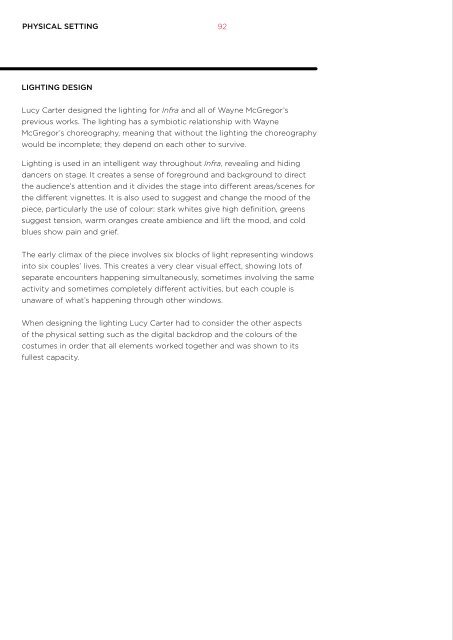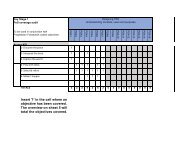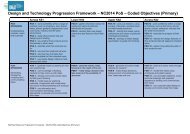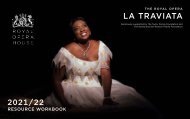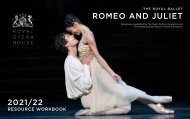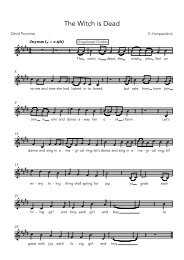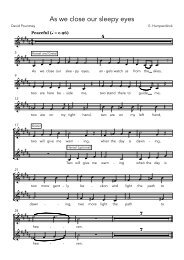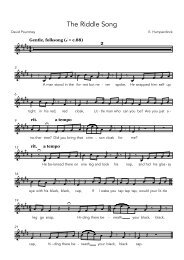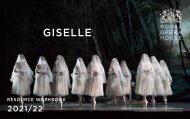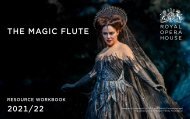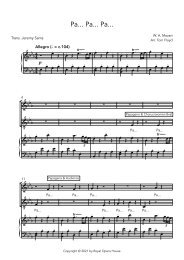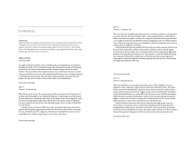Infra E-resource pack 2018
You also want an ePaper? Increase the reach of your titles
YUMPU automatically turns print PDFs into web optimized ePapers that Google loves.
PHYSICAL SETTING<br />
92<br />
LIGHTING DESIGN<br />
Lucy Carter designed the lighting for <strong>Infra</strong> and all of Wayne McGregor’s<br />
previous works. The lighting has a symbiotic relationship with Wayne<br />
McGregor’s choreography, meaning that without the lighting the choreography<br />
would be incomplete; they depend on each other to survive.<br />
Lighting is used in an intelligent way throughout <strong>Infra</strong>, revealing and hiding<br />
dancers on stage. It creates a sense of foreground and background to direct<br />
the audience’s attention and it divides the stage into different areas/scenes for<br />
the different vignettes. It is also used to suggest and change the mood of the<br />
piece, particularly the use of colour: stark whites give high definition, greens<br />
suggest tension, warm oranges create ambience and lift the mood, and cold<br />
blues show pain and grief.<br />
The early climax of the piece involves six blocks of light representing windows<br />
into six couples’ lives. This creates a very clear visual effect, showing lots of<br />
separate encounters happening simultaneously, sometimes involving the same<br />
activity and sometimes completely different activities, but each couple is<br />
unaware of what’s happening through other windows.<br />
When designing the lighting Lucy Carter had to consider the other aspects<br />
of the physical setting such as the digital backdrop and the colours of the<br />
costumes in order that all elements worked together and was shown to its<br />
fullest capacity.<br />
‘It is the most difficult part of the job – explaining<br />
and developing lighting ideas with no way to ‘show<br />
and tell’ or experiment. It is very cerebral 10 and the<br />
dialogue between the collaborators is extremely<br />
important. The more you discuss and exchange<br />
thoughts and ideas on the work before you go into<br />
the theatre the better because, then as you make<br />
your choices and begin your journey in the theatre,<br />
the more your instinctual choices will be embedded<br />
in and inherent to the ideas and themes of the<br />
piece. I form my lighting designs from mutual<br />
research and discussions with the collaborative<br />
team. That way there are always other ideas and<br />
lighting concepts to try when something doesn’t<br />
work in the moment. It’s very much about flexibility<br />
and responsiveness.’<br />
Lucy Carter<br />
in interview about her lighting installation<br />
as part of the multi-installation work<br />
No Body (2016) at Sadler’s Wells<br />
Sarah Lamb and Artists of<br />
The Royal Ballet in <strong>Infra</strong><br />
©ROH/Bill Cooper, 2010<br />
10. Cerebral – Defined by<br />
intelligence and logic rather<br />
than emotions or instinct.<br />
See Appendix A for full glossary.


